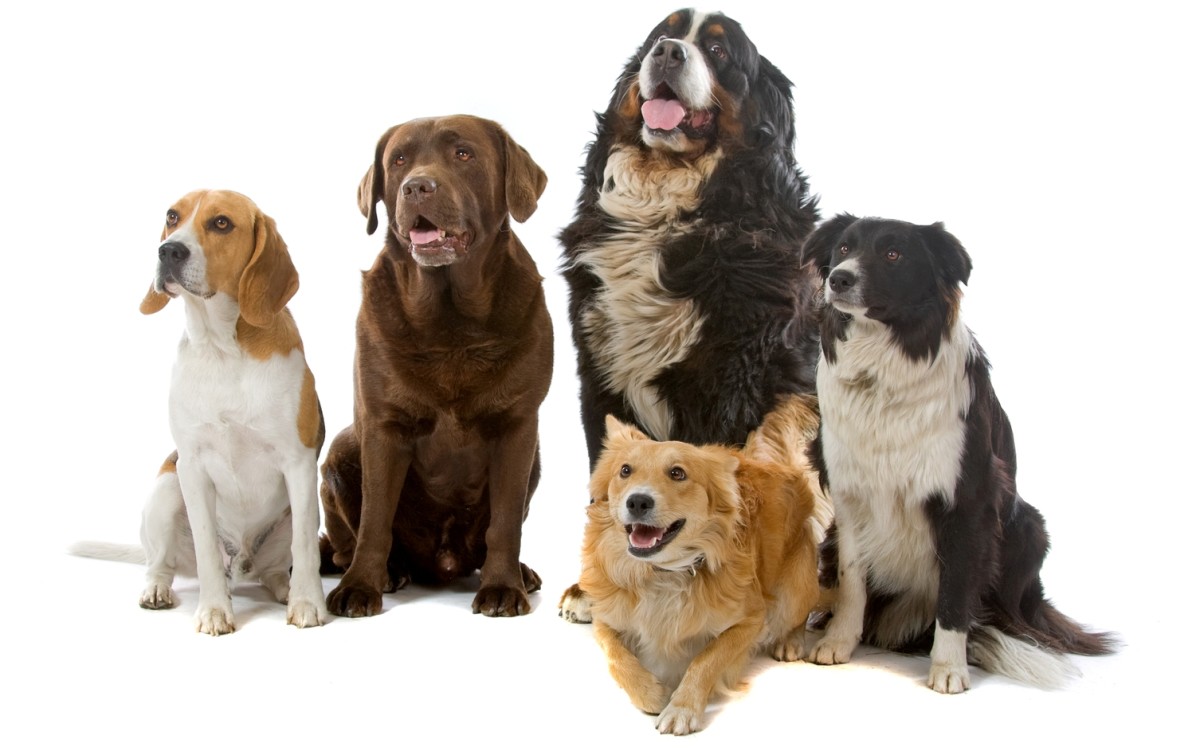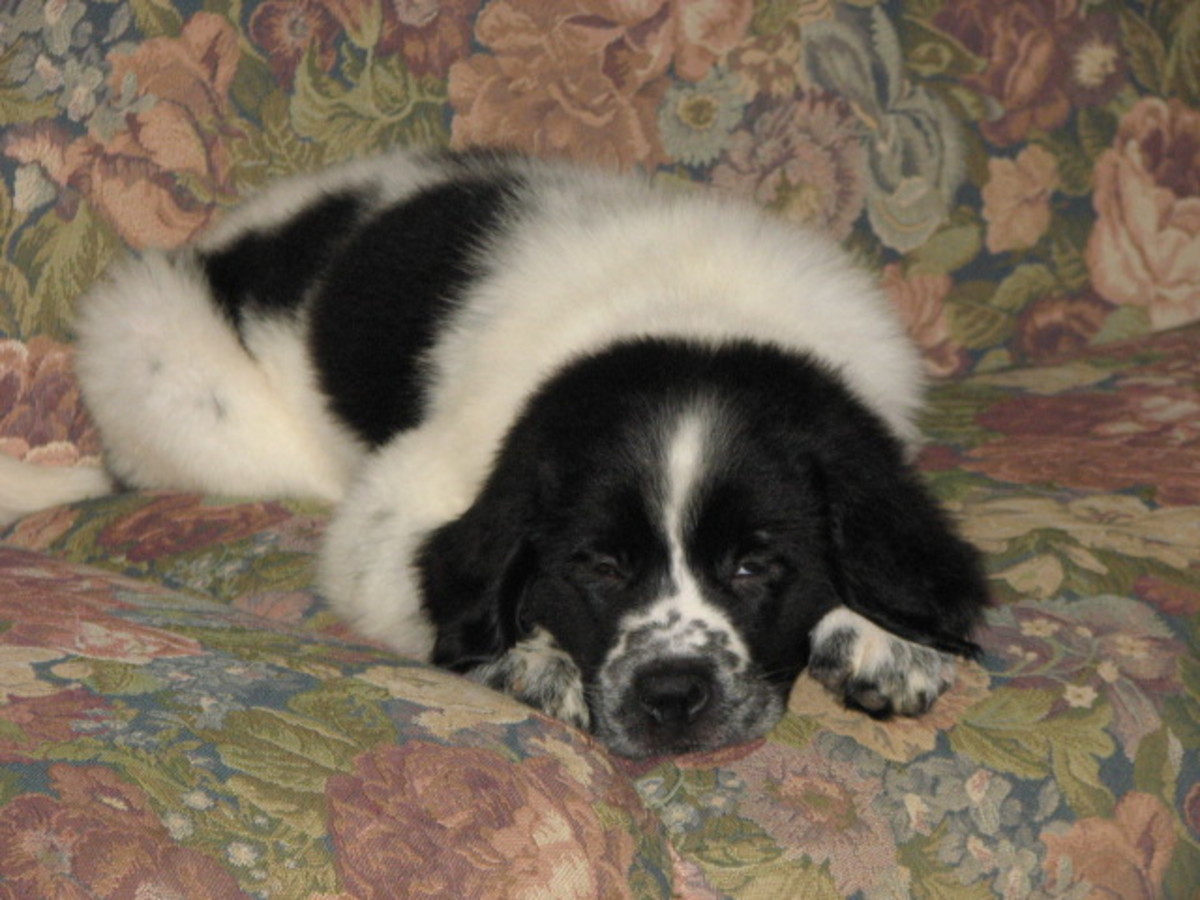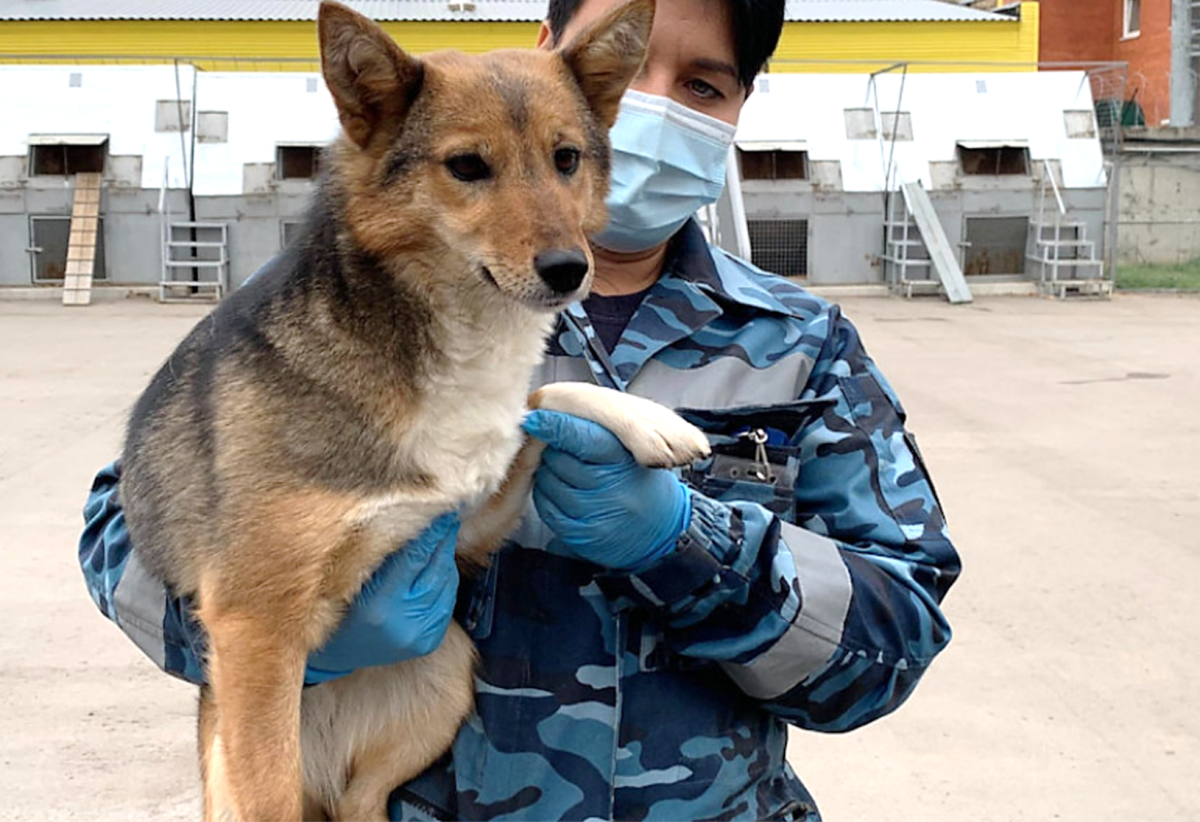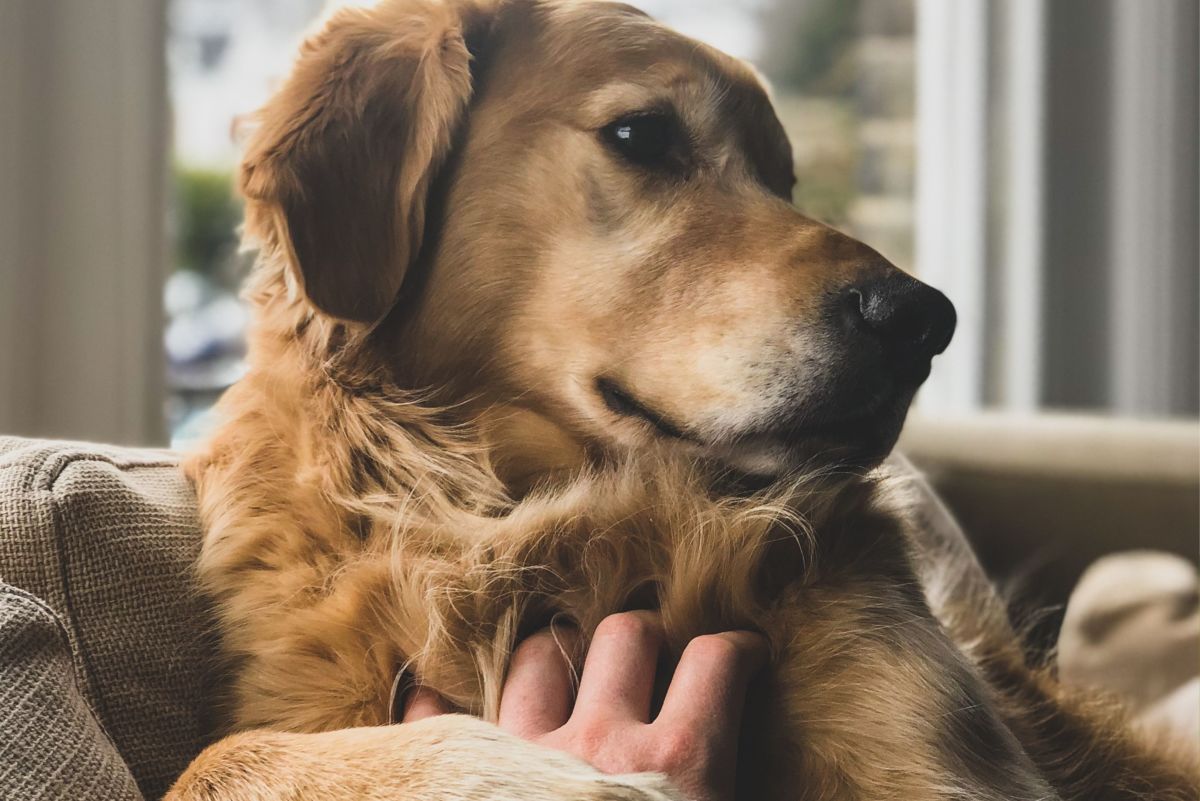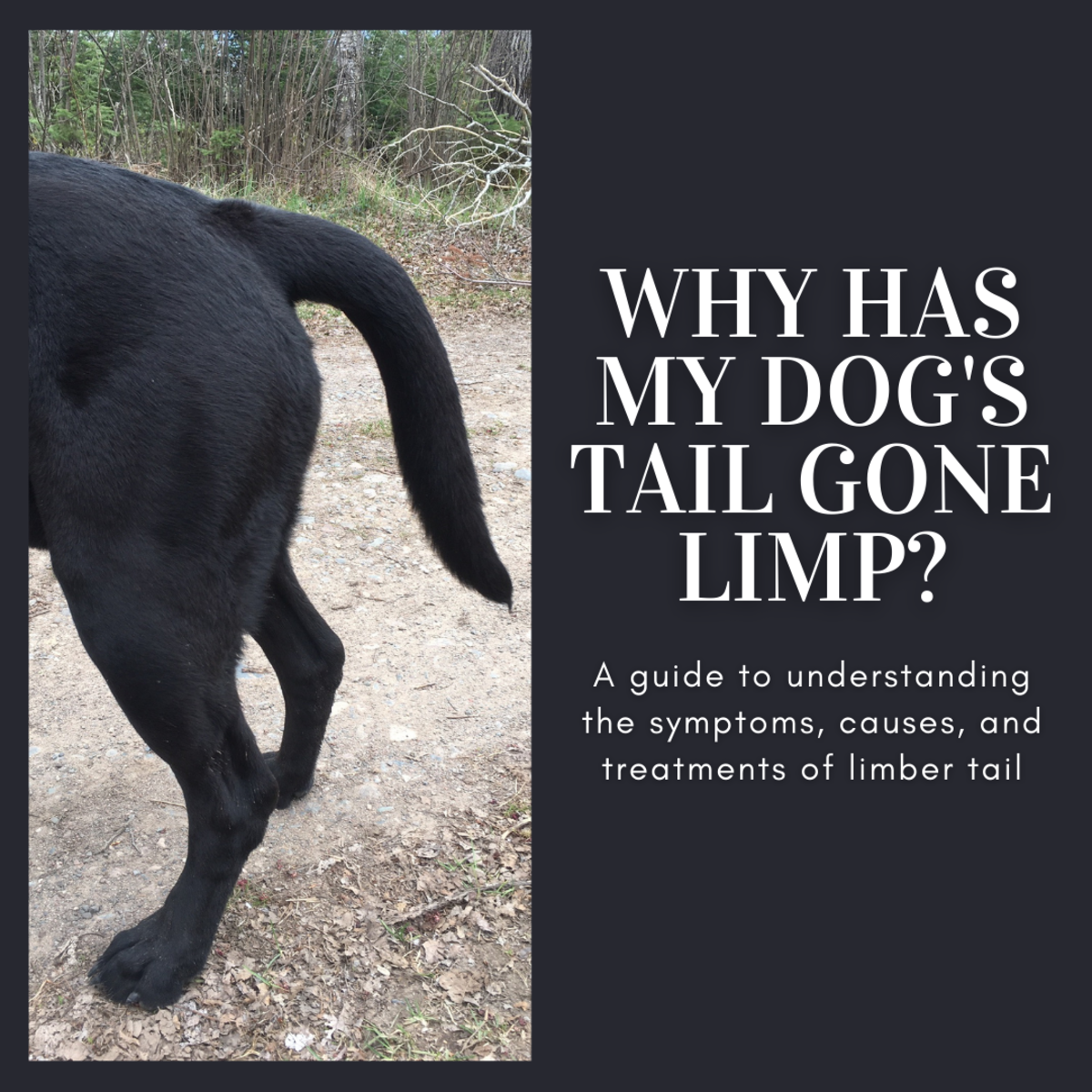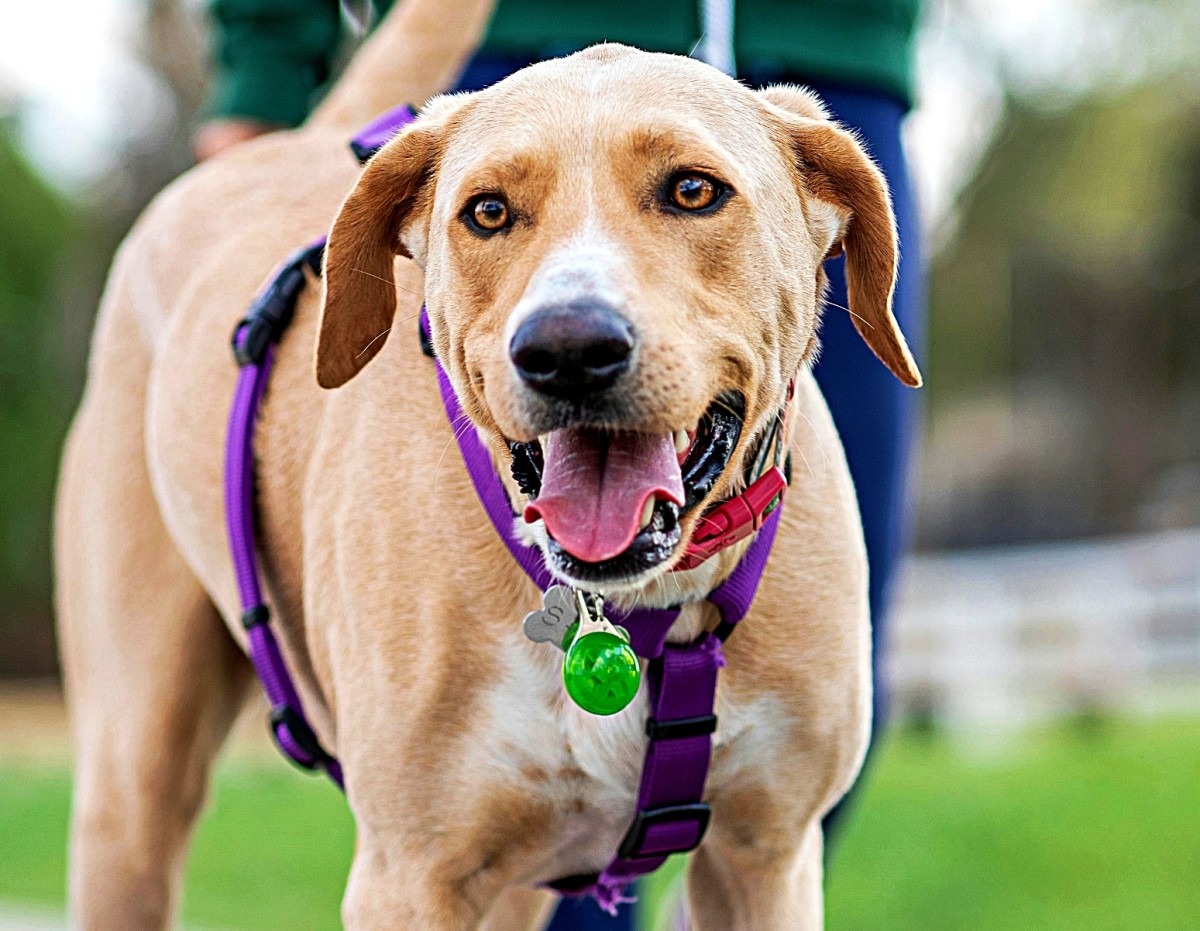Large Breed dogs and their Health Concerns
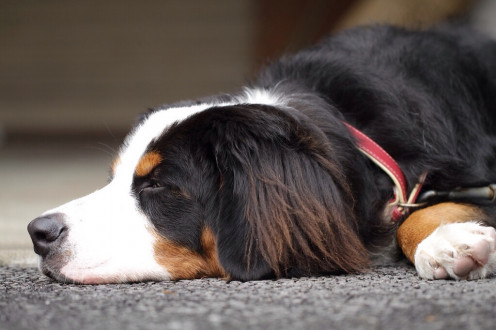
I often compare my little West Highland, Cloudy, with Scott, a large Labrador Retriever I see ambling in the park with his master.
Envy’s hand often grips me. I see how gently Scott behaves compared with my rambunctious West Highland and wish she had his instincts. Large dogs, indeed, generally behave with more reticence than small ones.
That being said, large breeds come with their share of health concerns. Large breed dogs have a nasty reputation for not being able to live as long as their smaller counterparts. Owning a burly dog means having to get around these issues.
Before addressing them, we have to understand what a large dog is. We need a grasp of the breeds that qualify as large ones. What is definitely important is a list of health conditions that owners of large dogs may have to overcome.
Which is your favorite breed?
Defining a large breed dog
Using the term “large breed” on its own is a little ambiguous. The size of a dog is subjective. What is large to one pet owner is small to another.
Dr. James Roush, a professor of Clinical Science at the Kansas State University, defines a large dog as weighing above 60 pounds.
Types of large dogs
Dogs that satisfy this qualification include:
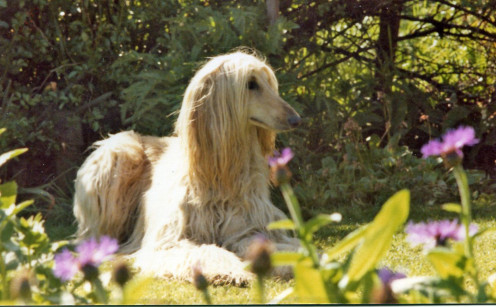
1) Afghan Hounds
The Afghan hound is a breed that we know by its long, silky coat and curly tail. One of the oldest breeds, it originated in the mountains of Afghanistan. Bred as sight hounds, they helped their masters hunt along the steppes of Kabul.
They are pets and favored watchdogs today.
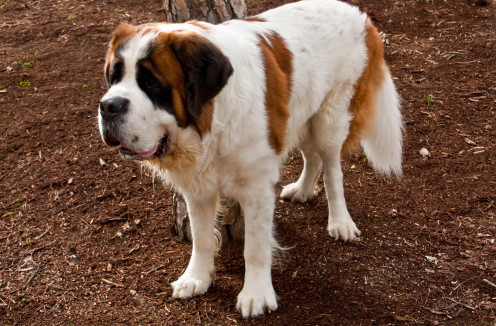
2) Saint Bernard
Weighing in at a hefty 140 lbs, the next dog, the graceful St. Bernard, certainly qualifies as a large breed dog. Their brown and white coats are either smooth or rough.
Their ancestors were Swiss mountain dogs or Sennelhunds. Bred to rescue those buried in avalanches, these dogs carried little barrels of alcohol that helped revive the unconscious. Now pet or watchdogs, they no longer serve in Alpine rescues.
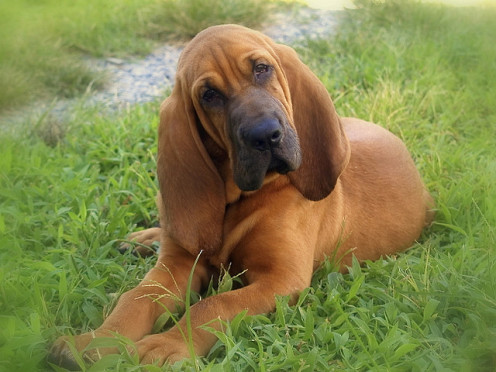
3) Bloodhound
Adding to the list of large breeds is the Bloodhound. This fine fellow, with tan, liver, black or defining red hair, stands at a tall 58 cm.
An ancient breed, legend has it that these dogs were bred at the St. Hubert Monastery in Belgium in 1000 A.D. They were later used for hunting because of their large olfactory glands that allow them to sniff six times more accurately than other dog breeds.
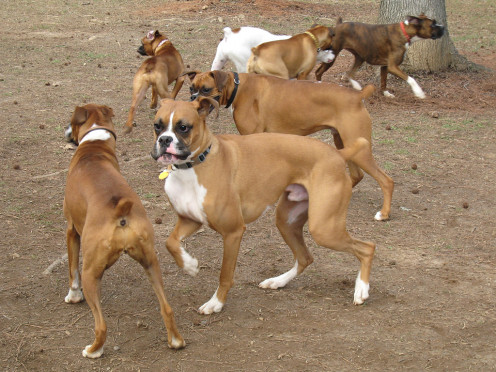
4) Boxers
The fourth large breed dog is the boxer. According to his breed standard, his head is in perfect proportion to its body. The muzzle is in proportion to the skull. Its short hairs are fawn and brindle.
A mastiff breed, it was bred in the 19th century for hunting purposes in Great Britain.
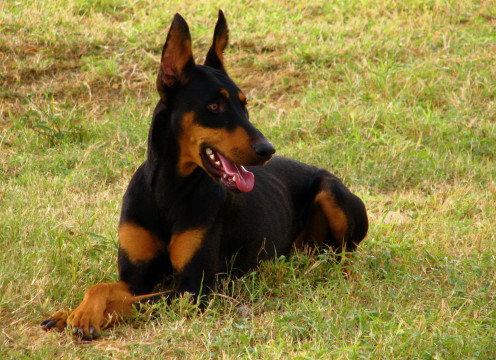
5) Doberman Pinschers
The elegant Doberman Pinscher is the next on the list. Developed in 1590 by Karl Fredrich Louis Dobermann, it is an intelligent, loyal breed that weighs over 60 lbs.
They were, and still are, used as guard dogs. They are popular dogs with modern police forces.
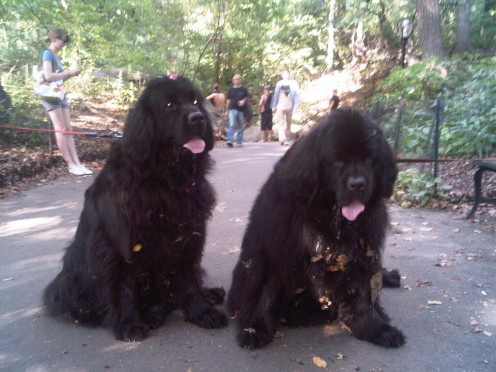
6) Newfoundlands
The Newfoundland, too, is a large at a bulky 132 lbs. The fishermen of the Dominion of Newfoundland (now part of Canada) bred it to assist with life saving and other tasks. Newfoundlands share many of the Mastiff's characteristics, including stout legs, broad heads and a sturdy bone structure. The breed is known for its strength, steady disposition and courage.
Tales about the newfoundland's bravery are aplenty. Gander, a Newfoundland that served as a guard dog for the British military during the Second World War, often helped push back enemy forces. In the Battle for Hong Kong, he bravely retrieved a grenade which landed in the middle of the Canadian forces, but it blew before he could throw it away.
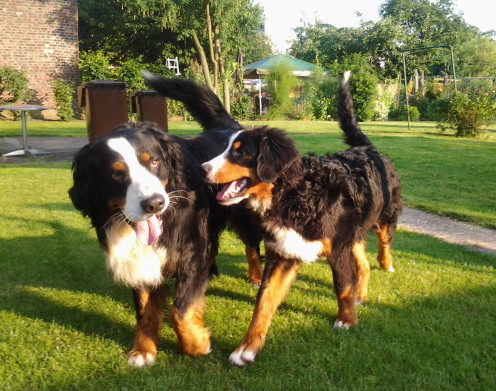
7) Bernese Mountain dogs
To add to the growing list is the Bernese Mountain Dog. Weighing between 85 and 110 pounds on average, they certainly qualify as large breeds.
These fellows are, like St Bernards, Swiss Mountain Dogs. Bred as working dogs, they were used in Alpine rescues. These days, they are happy to just tote a cart for you.
8) Great Pyrenees
Lastly, weighing at a heavy 120 lbs is the Great Pyrenees. This dog, with its coarse, tan coat, herded sheep for Basque shepherds and served as a livestock guardian dog.
This astounding fellow has, owing to his ancestry, strong protective instincts. In spite of his temperament, he is extremely gentle with children.
Common Health Conditions of Large Breed Dogs
These gargantuan canines have a powerful outset, but are actually plagued by a myriad of health problems. Their potential health problems cause their short life-spans.
Before making a large breed dog a part of the family, note these probable health concerns.
1. Hip Dysplasia
The first of these medical anomalies is hip dysplasia. Hip dysplasia is the result of an improperly formed hip joint. The thigh bone, dislocated from the ball socket, is too loose. This causes the dog extreme pain.
Dogs suffer from hip dysplasia because of weight gain, a loss of pelvic-muscle mass or poor blood count. If your large canine friend suddenly starts "bunny-hopping" or not using its hind legs, it needs to see a vet.
Treatment for hip dysplasia involves surgical replacement of the affected hip. If the hip is not replaced, the dog may have to use a K9 Cart.
2. Willebrand’s disease
Another debilitating condition large breeds suffer from is Von Willebrand's disease. Named after discoverer, Finnish pediatrician Erik Adolf Von Willebrand, it is a blood disorder caused by a deficiency of a protein named, aptly, the Von Willebrand factor (VWF).
Dogs that suffer from Von Willebrand's disease bleed profusely from the gums or feces as their blood cannot coagulate. Notably, Dobermans and Berners are prone to this disease.
Unfortunately, there is no cure for this malady. Still, it is manageable. Suffering dogs may need regular transfusions to restore proper levels of VWF.
3. Bloat
Bloat is another ailment that creeps unexpectedly into the life of a large dog. The disease's technical term is Gastric Dilatation Volvulus.
Gastric Dilatation happens when, painfully, the dog's stomach does an ugly twist. The suffering dog's condition quickly deteriorates. The dog, unsurprisingly, would vomit and retch.
Large dogs with deep chests, such as the Saint Bernard or Doberman, are prone to this condition. If your dog eats too quickly or ingests foreign objects while on a walk, it would cause bloat as well.
To prevent bloat, feed your dog in small amounts. Do not feed bones or over-treat your dog if it is prone to bloat. Dog proof your home and make sure that foreign objects are not lying around.
Do not exercise your dog immediately after a meal.
4. Obesity
Another common, but increasing medical concern is obesity. Giant dogs such as Berners and Newfoundlands do pack on the pounds easily.
If you feel around your dog's ribcage and the layer of flesh around it is too thick, you know he is ready to shed a few pounds. If you have an overweight pet, feeding your dog recommended amounts of food is essential. Ask a veterinarian for advice.
5. Hypothyroidism
Note that obesity in large dogs is a side effect of hypothyroidism. This happens when the thyroid gland fails to produce enough of the hormone that controls metabolism. The dog's metabolism slows down drastically.
In addition, a dog with hypothyroidism may experience lethargy, hair loss or frequent infections.
Treatment can be achieved with a range of homeopathies or supplements. Do ask your vet for recommendations.
6. Heatstroke
Adding to the list of large breed ailments is heatstroke. This is a preventable, yet overlooked possibility, often caused by neglectful actions such as leaving the dog in the car on a hot day.
Excessive panting is an obvious sign. Newfoundlands, Berners and St Bernards, breeds native to cooler areas, pant or drool when over-heated.
If you live in a warmer climate, hose your dog regularly. Have ice on hand on long walks and put it on the dog's tongue. Stop, rest and fan it occasionally.
7. Heart Problems
Besides heatstroke, large dogs are susceptible to a range of heart problems, including embolisms and murmurs.
One of these heart conditions is congestive heart failure. Dogs with congestive heart failure
will regurgitate their food. In large dogs, this is known as dilated cardiomyopathy. They will also cough persistently.
Dogs with this ailment benefit from Vitamin-B supplements. Vets have, at their disposal, a variety of drugs to administer treatment. They include digitalis and lidocaine. Do not over-exercise a dog with congestive heart failure.
8. Arthritis
Lastly, older large dogs are likely to suffer from arthritis. Their bulk often places stress on their joints. Inflamed joint capsules cause the onset of rheumatoid arthritis.
Pain when jumping or walking is an obvious sign. A dog with arthritis may refuse to jump when it is necessary.
Vets suggest physical exercise as it increases joint flexibility. Acupuncture is also becoming popular as a treatment for arthritis. I have a neighbor who sends his Labrador for treatments regularly, and they seem to benefit the dog.
Conclusion
Having a large dog entails responsibility and commitment. It means having to form committee which takes care of all needs.
Other Pet Hubs by Michelle Liew
- Getting children and dogs to mix well
THere's always a way for children and dogs to interact safely. - Ways to help our dogs to maintain a healthy weight
An article on overcoming weight problems in dogs. - The nature of agility training and how dogs and owne...
An article on agility training for dogs. - Knowing what annoys or pleases our dogs: building la...
An article on what annoys and pleases our dogs. What can we do to build good relationships with them? - The ways dogs make a difference to our lives: variou...
An article on how dogs can make a difference in many ways and preparing a dog as a service dog. - Symptoms of fear in dogs and how to help our pets ov...
On the different things that make our dogs afraid and overcoming them. - How to reduce or eliminate worms in dogs
On the importance of deworming our dogs, how to do so and what to expect after deworming - Therapy dogs and improving emotional states
Showcasing the very good work of Therapy Dogs, more than man's best friend. Is your dog a suitable therapy dog? - Managing eye conditions in dogs:symptoms,types,cause...
This is an article on the common eye problems in dogs and their causes, symptoms and treatments. - Causes of skin disorder in dogs:symptoms, types and ...
What are the symptoms, causes and types of skin diseases in dogs? Which breeds usually experience them?

